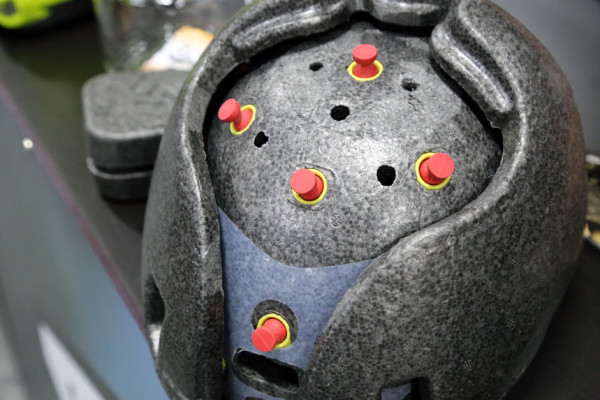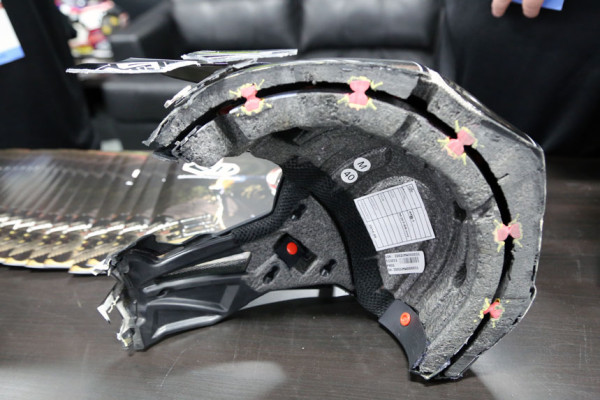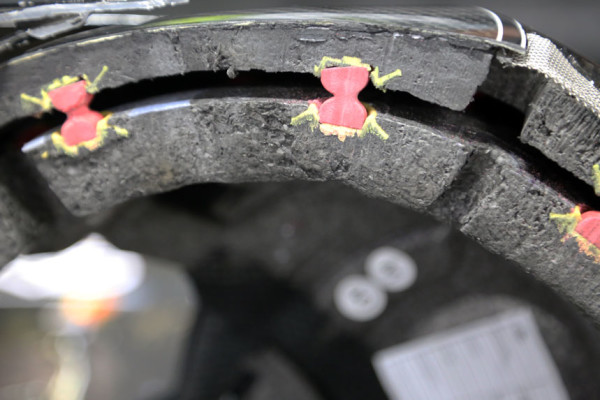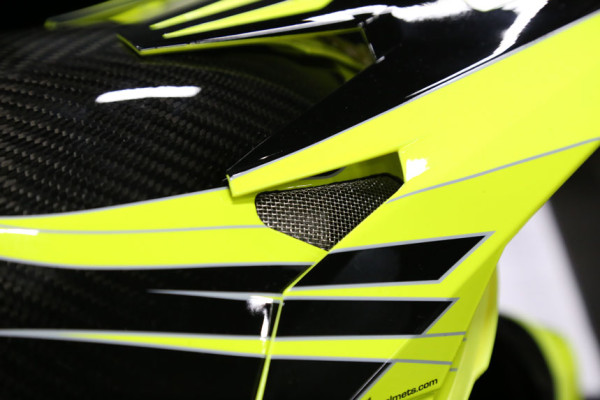In recent years, it has become increasingly apparent that concussions can cause irreparable damage to the brain. So in order to help mitigate the potential damage from head impacts, helmet manufacturer 6D has developed a new patent pending technology that uses an in-helmet suspension system to help limit angular acceleration.
Their system, called Omni Directional Suspension (ODS) utilizes a dual liner, which is supported internally by a series of hourglass shaped elastomers.
The inner-liner is tuned for lower speed impacts below 120 Gs, while the thicker outer-liner is designed to protect against life threatening high energy impacts.
The ODS elastomers serve a dual purpose, providing both damping in an accident, and acting as a “slip plane” (to borrow a phrase from MIPS) to reduce angular acceleration.
The helmets have been available for motocross for some time, but the company debuted the new bike specific version at Interbike. Dubbed the ATB-1, the helmet exceeds ASTM DH, CPSC, and CFR standards, and is roughly half a pound lighter than the DOT version.
Other features include Eject compatibility, quick release cheek pads, and a ton of ventilation ports. The helmet will be available in three colors, sizes XS-L, and will retail for an eye watering $725.
Learn more about the technology at 6D Helmets.




